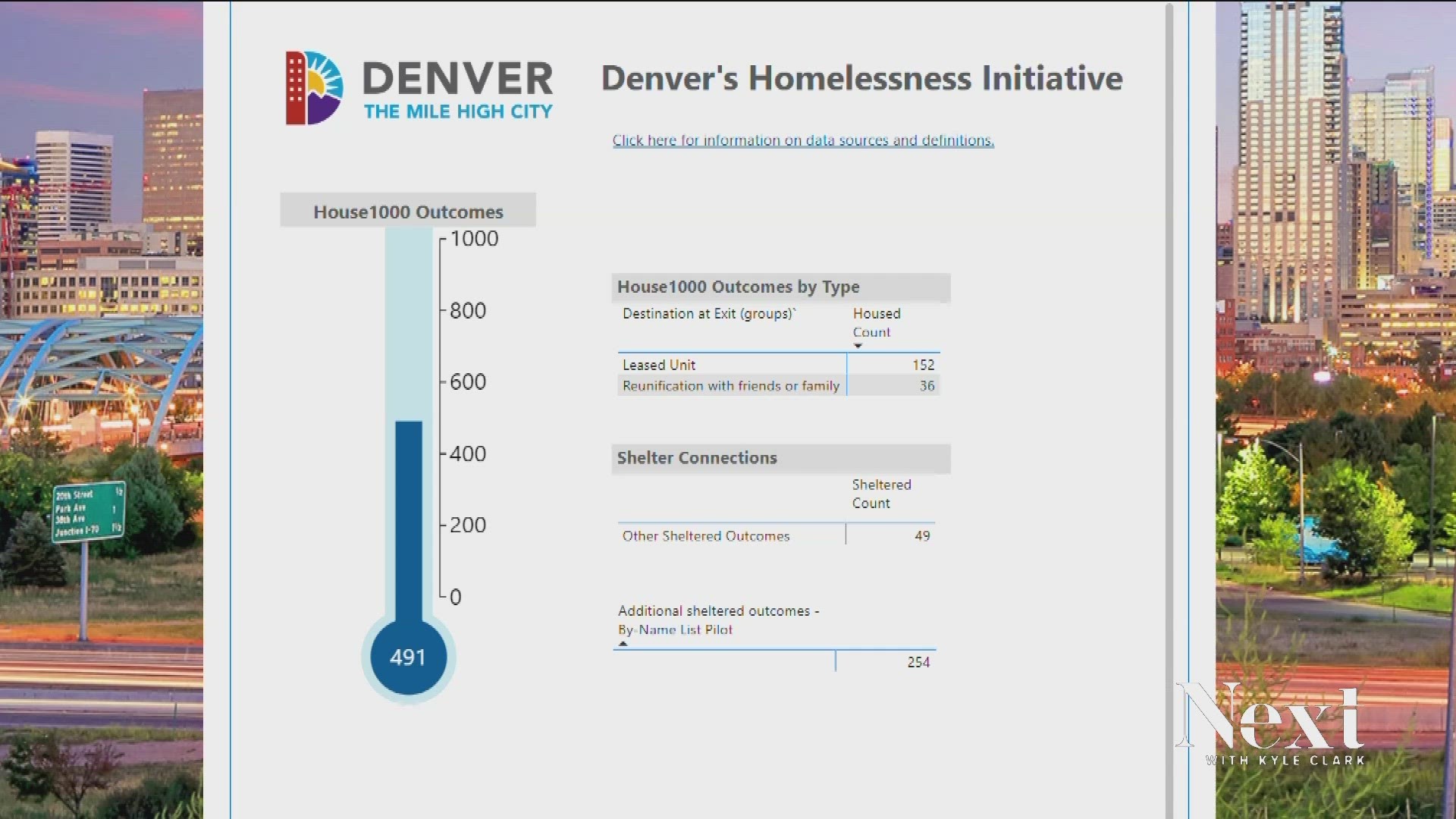DENVER — The City of Denver has publicly misrepresented how it tracks success in getting people off the streets for months, even after city leaders were informed about the misleading information.
The city is in an all-hands-on-deck scenario as it races to get 1,000 people off the streets and into housing by the end of the year.
City leaders repeatedly said the successful outcome being measured was 14 days or longer in shelter, while the city’s House1000 dashboard actually showed the total number of people moved indoors for any length of time, even if they returned to homelessness.
The House1000 project is Mayor Mike Johnston's top priority in his first year in office. The city long allowed the public to believe the effort has been more successful than it was in reality, stemming from what appears to have been confusion within city departments.
But well after city leaders found out about the misrepresentation in housing numbers, the Johnston administration did not issue a clarification and stonewalled journalists asking about the disconnect. When 9NEWS journalists questioned the mayor’s office about the discrepancy, spokesman Jose Salas said it stemmed from a misunderstanding on 9NEWS’ part.
The city acknowledged to Denverite on Thursday that the success metric had been publicly misrepresented and was not corrected even once the confusion was discovered.
Taxpayers, journalists, and even city officials were led to believe the original dashboard showed how many people have come off the streets and stayed in shelter for at least 14 days. Fourteen days was the success metric repeatedly described to the public and city council by the Johnston administration.
In an interview with 9NEWS on Sep. 27, Senior Adviser for Homelessness Resolution Cole Chandler said, “In order for someone to be counted as successful, they need to hit that 14-day mark."
That same day, Chandler reiterated the 14-day metric to Denver City Council.
“This is about permanence and that simply a point at which we had to determine ‘ok we've got someone to a greater degree of stability, and we can count that towards our thousand-person goal.’ That's where that number came from,” Chandler said.
With the city not even halfway to the House 1000 goal by mid-December, Next with Kyle Clark has been tracking the numbers daily and realized the public tracker wasn't showing the number of people housed for at least 14 days, but instead showed everyone who was moved inside even just for a moment, making the city's effort seem more successful.
Salas dismissed the concern over discrepancies, chalking it up to journalist’s confusion on how the administration tracked success. He did not acknowledge that the city knew it had publicly misrepresented how it was tracking success on its top priority.
Denver's progress dashboard for the House1000 initiative was taken offline on Thursday, with a message saying progress was being updated.
At 5:45 Thursday evening, the dashboard returned to the city’s website. It now shows 550 people have been moved indoors. It is not immediately clear whether those 550 people were counted after being sheltered for 14 days.
A word from Kyle on confusion and deception:
SUGGESTED VIDEOS: Next with Kyle Clark


